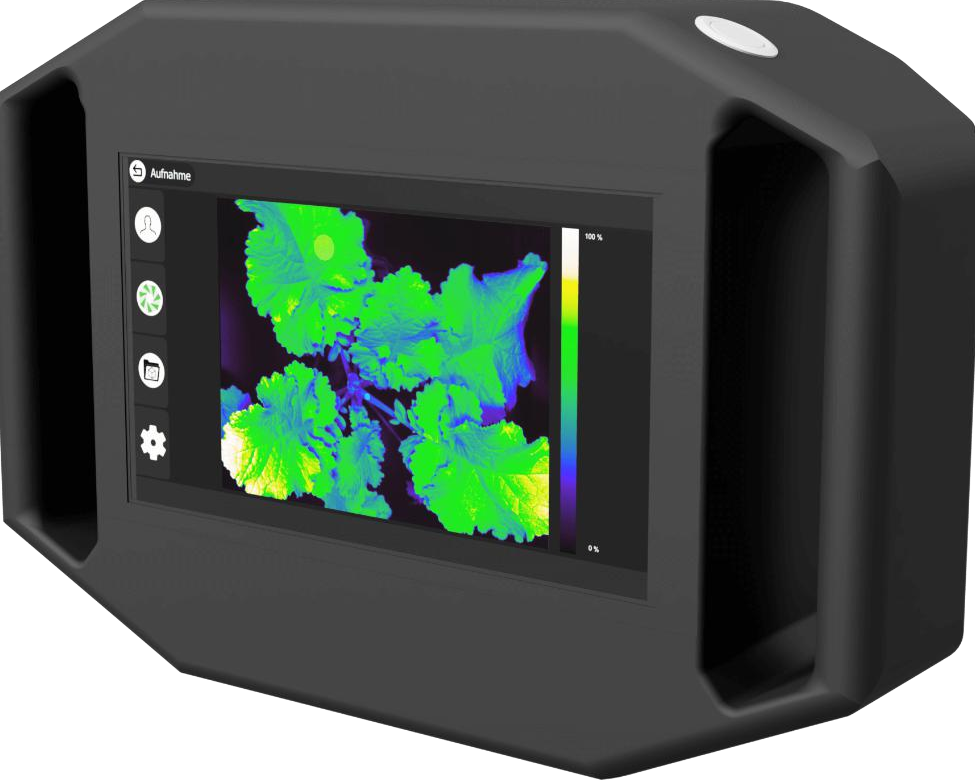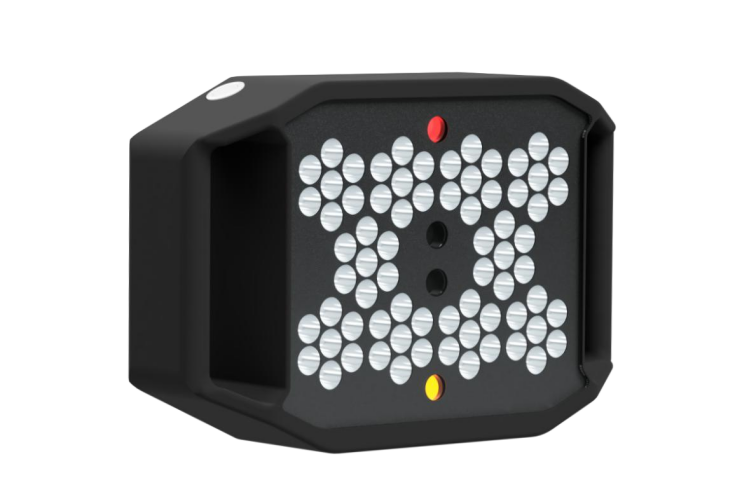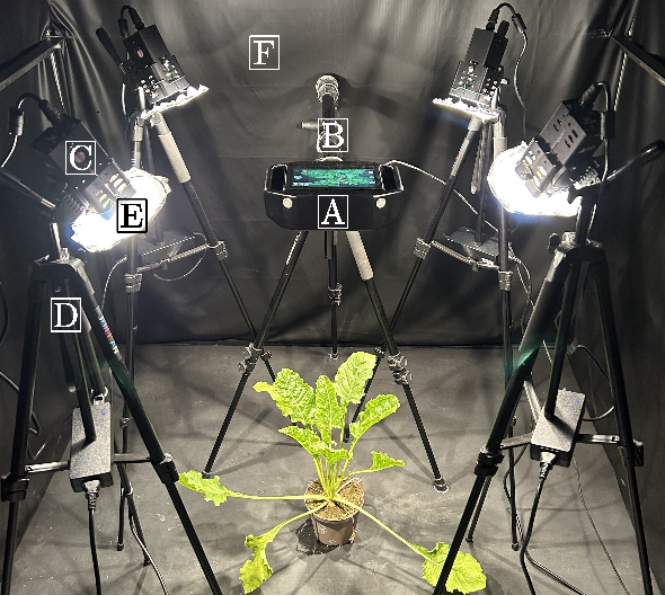品质至上,客户至上,您的满意就是我们的目标
技术文章
当前位置: 首页 > 技术文章
植物病害表型组学-神经网络支持的植物表型高光谱成像系统的质量保证
发表时间:2024-07-29 15:56:41点击:227
来源:北京博普特科技有限公司
分享:
HAIP Solutions公司的BlackMobile高光谱成像系统是一款智能手持式涵盖可见光和近红外波段范围的高光谱成像系统,可轻松、快速获取光谱数据,实现现场分析。相机集成了宽带LED照明单元,无需外置光源,适合各种环境。系统配有大触摸屏,用户界面简洁,确保了实践应用。无需深度专业知识即可使用相机或解读结果,系统采用即用设计,处理结果可在屏幕上显示。

特点
智能便携高光谱成像系统
测量迅速、易于使用
集成宽带LED照明单元
VNIR (500-1000 nm) HSI 与4K RGB
NIR范围高信噪比系统配有大触摸屏,用户界面简洁, 确保了实践应用。无需深度专业知识即可使用相机或解读结果,系统采用即用设计,处理结果可在屏幕上显示。
100 光谱波段
7“触摸屏显示
内置高性能GPU 用于数据处理
光谱特性
波长范围:500-1000nm
波段数量:100
光谱分辨率:5 nm
光谱采样:5 nm
空间性质
RGB分辨率:3840 * 2160 px
光谱分辨率:640 * 480 px
光学特性
视野(FOW):22 * 16.5 cm ( 50 cm)
传感器特性
传感器:CMOS
辐射分辨率:10 bit
积分时间(立方体):<3秒
数据尺寸(原始):120 MB/ 数据立方体
HAIP植物病害表型组学应用案例-神经网络支持的植物表型高光谱成像系统的质量保证
摘要
背景:这项研究为用于植物表型分析的高光谱成像(HSI)系统提出了一种易于应用的质量保证管道。此外,还介绍了一种利用质量保证的高光谱图像分析概念来研究植物病害的进展。质量保证应用于手持式线扫描HSI系统,该系统包括评估空间和光谱质量参数和集成照明。为了测试不同工作距离下的空间精度,分析了基于正弦波的空间频率响应(s-SFR)。通过计算HSI系统与非成像光谱仪之间校准材料测量值的相关性来评估光谱精度。此外,通过分析甜菜树冠的光谱响应,评估了不同的照明系统。其中一个使用案例,是对受 Cer-cospora 叶斑病 (CLS) 侵染的甜菜植物进行时间序列 HSI 测量,使用卷积神经网络 (CNN) 支持的数据分析来估计疾病的严重程度。
结果:校准材料的测量结果与非成像光谱仪的测量结果高度相关(r>0.99)。在每个测试的工作距离上,可以检测到单个图像中轻微的清晰度差异。使用集成 LED 照明进行 HSI 会导致 677nm 和 752nm 处的光谱响应失真。建立的CNN的CLS病变像素检测性能足以在外部照明下进行有质量保证的高光谱测量的可靠疾病严重程度进展。

结论:质量保证管道成功应用于评估手持式HSI系统。s-SFR分析是评估HSI系统空间精度的重要方法。比较 HSI 系统和非成像光谱仪之间的测量结果可以提供有关被测系统光谱精度的可靠结果。该研究强调了均匀分布的漫射照明对HSI的重要性。尽管测试系统在图像分辨率、清晰度和照明方面存在局限,但经过测试的 HSI 系统的高光谱精度在外部照明的支持下,使得建立基于神经网络的概念来确定 CLS 的严重程度和进展成为可能。数据驱动的质量保证管道可以很容易地应用于任何其他 HSI 系统,以确保高质量的 HSI。



关键词: 图像分辨率, 图像清晰度, 光谱精度, 空间精度,照明、机器学习、遥感、植物病害
Quality Assurance of Hyperspectral Imaging Systems for Neural Network supported Plant Phenotyping
Abstract
Background: This research proposes an easy to apply quality assurance pipeline for hyperspectral imaging (HSI) systems used for plant phenotyping. Further-more, a concept for the analysis of quality assured hyperspectral images to investigate plant disease progress is proposed. The quality assurance was applied to a handheld line scanning HSI-system consisting of evaluating spatial and spec- tral quality parameters as well as the integrated illumination. To test the spatial accuracy at difffferent working distances, the sine-wave-based spatial frequency response (s-SFR) was analysed. The spectral accuracy was assessed by calculat- ing the correlation of calibration-material measurements between the HSI-system and a non-imaging spectrometer. Additionally, difffferent illumination systems were evaluated by analysing the spectral response of sugar beet canopies. As an usecase, time series HSI measurements of sugar beet plants infested with Cer- cospora Leaf Spot (CLS) were performed to estimate the disease severity using convolutional neural network (CNN) supported data analysis. Results: The mea- surements of the calibration material were highly correlated with those of the non-imaging spectrometer (r>0.99). The resolution limit was narrowly missed at each of the tested working distances. Slight sharpness difffferences within indi- vidual images could be detected. The use of the integrated LED illumination for HSI can causes a distortion of the spectral response at 677nm and 752nm. The performance for CLS diseased pixel detection of the established CNN was sufficient to estimate a reliable disease severity progression from quality assured hyperspectral measurements with external illumination.
Conclusion: The qual- ity assurance pipeline was successfully applied to evaluate a handheld HSI-system. The s-SFR analysis is a valuable method for assessing the spatial accuracy of HSI-systems. Comparing measurements between HSI-systems and a non-imaging spectrometer can provide reliable results on the spectral accuracy of the tested system. This research emphasizes the importance of evenly distributed diffffuse illumination for HSI. Although the tested system showed shortcomings in image resolution, sharpness, and illumination, the high spectral accuracy of the tested HSI-system, supported by external illumination, enabled the establishment of a neural network-based concept to determine the severity and progression of CLS. The data driven quality assurance pipeline can be easily applied to any other HSI-system to ensure high quality HSI.
Keywords: Image Resolution, Image Sharpness, Spectral Accuracy, Spatial Accuracy,
Illumination, Machine Learning, Remote Sensing, Plant Diseases, Computer Vision
相关阅读